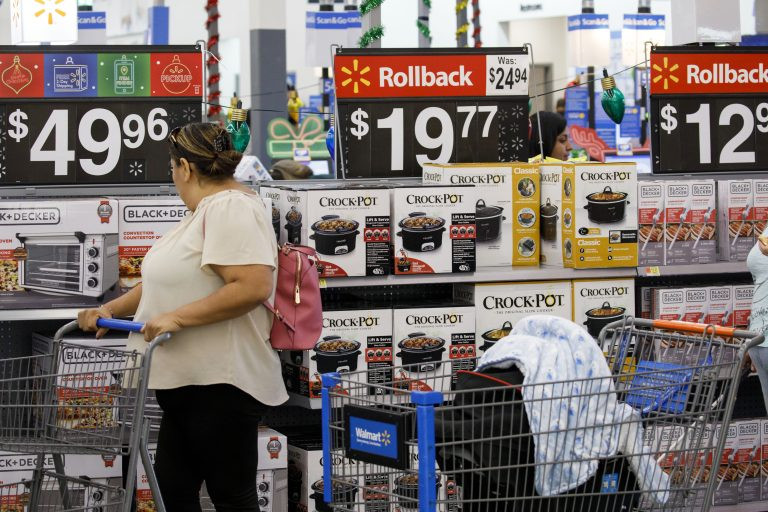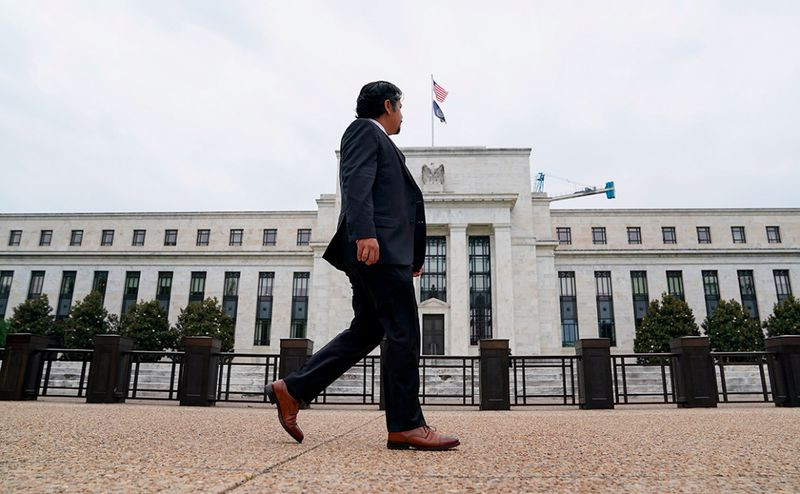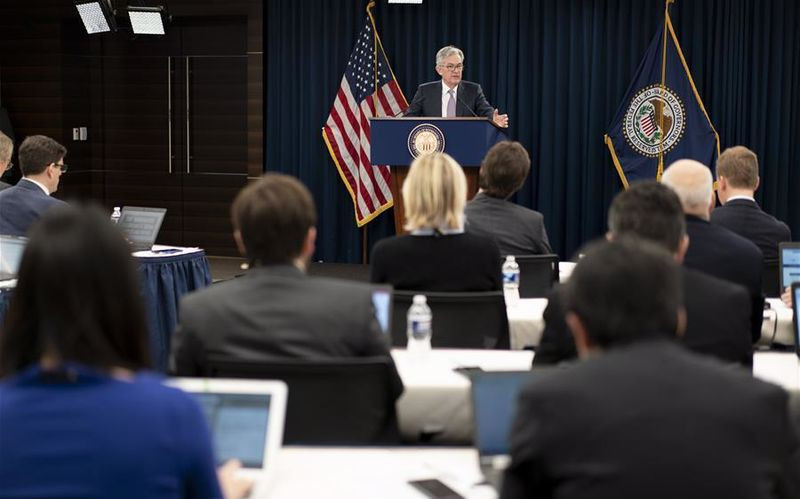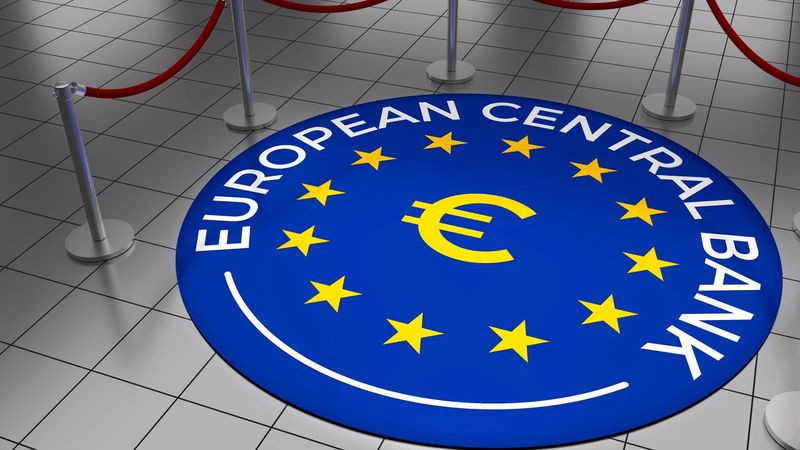
While European Central Bank officials are still deciding whether to resist the growing price pressure in the currency bloc, their American colleagues are already determined to curb the inflation that has raged in the United States.
At the December meeting, the US central bank made it clear that interest rates would rise this year – every FOMC member predicted at least one round of rate hikes, and half expected three – and that it would also reduce its assets by $9 trillion as a second means of tightening monetary policy.
However, the situation has changed somewhat since then.
Federal Reserve officials who have developed a seemingly clear plan to combat high inflation are now facing signs that the coronavirus is slowing the national economy again. In addition, they have to deal with markets that fear that the central bank may tighten financial conditions faster than previously expected.
The day before, the US Department of Labor reported that the number of initial applications for unemployment benefits in the country for the week ending January 15 increased by 55,000, reaching 286,000, which is the highest level since mid-October.
"Although this is partly due to volatile seasonal trends in the data, this increase is much more due to the impact of Omicron," Pantheon Macroeconomics analysts said.
They now expect that the report on American employment for January will show the loss of 300,000 positions in jobs.
"We would be surprised to see a significant improvement in February. This will be the last employment data that the Fed will receive before the likely decision in March to raise interest rates," Pantheon Macroeconomics noted.
The US retail sales report for December was disappointing, and January's leading macro indicators declined.
In particular, the index of American consumer confidence from the University of Michigan this month sank to 68.8 points from 70.6 points recorded in December, which was the second lowest level in a decade.

Economists surveyed by The Wall Street Journal in January lowered expectations of US GDP growth in the first quarter and in 2022 as a whole.
The US economic recovery in January–March was revised up by more than one percentage point, to 3% from 4.2% predicted in October.
Experts also "cut" the overall annual forecast to 3.3% compared to the previously expected 3.6%.
The deterioration in estimates occurred due to the fact that consumers have to deal with high inflation, and enterprises have to deal with interruptions in work and production.
FOMC officials hope that the impact of the pandemic on the economy will soon weaken, and the daily rate of infection seems to be slowing down.
However, other risks to the economic recovery remain, including federal government spending cuts that have helped support household disposable income throughout the pandemic.
"The Fed considers the signs of sluggish growth as temporary, entirely due to failures related to Omicron. That would be a mistake. This year there will be a historic tightening of fiscal conditions. An increase in interest rates in the context of slowing economic growth may trigger a recession," Natixis strategists believe.
The Fed will hold a two-day meeting next week. On the one hand, the regulator can recognize the economic risks associated with the virus while remaining committed to fighting inflation. On the other hand, he may show such concern about prices that investors will expect an even more active tightening of monetary policy in the United States.
Currently, the markets are buzzing with talk that the US central bank may make history with its first half-point rate hike in more than 20 years, and are rife with speculation that the Fed will begin to reduce its balance sheet faster than expected and tighten lending conditions by another notch.

The futures market is now highly evaluating the chances of as many as five federal funds rate hikes this year – by a quarter of a percentage point each.
Even those FOMC officials who are most concerned about inflation know that there are limits to how quickly the Central Bank can act without risking a negative reaction in financial markets.
Last week, Fed spokesman Christopher Waller said there was no mood to raise the key rate by half a percentage point in March as a kind of shock therapy against inflation.
"We have not prepared the markets for anything so dramatic," he said.
However, the Fed is now in a situation it has not faced for a long time – if ever – as it tries to reduce inflation in an environment where global supply chains may undergo a prolonged adjustment by maintaining higher prices through a channel outside the influence of the regulator.
Less than a week before the FOMC meeting, investors are worried that the central bank is going to signal an aggressive rate hike and an imminent and rapid reduction in its balance sheet.
The dollar has taken a breather after recent gains, as the rally in US Treasury yields has stalled, but is still preparing to show the best week in a month against its main competitors ahead of the December Fed meeting.

"You would think that higher interest rates would lead to a stronger dollar. But if you are told that rates will rise soon and balances will shrink from July, why would you buy now? Just wait and then switch to a structure with higher interest rates," PineBridge Investments specialists said.
Meanwhile, Bank of America strategists are more positive about the prospects of the greenback and predict its strengthening during 2022. They believe that the continued high inflation in the United States leads to the need for a more rapid tightening of monetary policy and an increase in real interest rates.
The bank expects that the dollar will rise most noticeably against currencies with a low beta coefficient, including the euro.
According to the forecast of Bank of America, the EUR/USD pair will decline to 1,1000.
"We expect that the underlying inflationary pressure will remain in the US and decrease in other countries, which will lead to a greater divergence in monetary policy and will become a tailwind for the USD in the form of an increase in the difference in interest rates," the bank's analysts said.
"The Fed is well behind the yield curve, and underlying inflationary pressures in the US will force it to quickly normalize monetary policy over the next two years. This is in sharp contrast to the position of the ECB, from which we do not expect changes in interest rates during this period," they added.
The Fed is likely to indicate a rate hike in March. Unlike its American counterpart, the ECB is "concerned" about the tightening of monetary policy, which puts pressure on the exchange rate of the single currency against the US dollar, UBS analysts say. They expect to see the euro at $1.12 in March.

On the eve of the ECB published the minutes from the December meeting. The document showed that the representatives of the Central Bank disagreed about the inflation forecast. Some of them noted that it is possible that inflation in the eurozone will grow longer than expected, while others were ready to make it clear that the bank is ready to act if price pressure becomes stable. At the same time, the regulator expressed concern about the premature curtailment of monetary support measures.
The single currency failed to grow on the protocol, and the dollar continued to strengthen amid investors' flight from risk, which caused the EUR/USD pair to close in the red zone on Thursday.
During the Asian session on Friday, it sank to 1.1300, but then managed to regain lost positions and rose to 1.1350.
The USD index fell by more than 0.1% in a day, to 95.60, but was on track to grow by 0.5% in a week, which is the best indicator since mid-December.
The dollar is experiencing moderate pressure from bears amid falling yields on long-term US Treasury bonds. This allows the main currency pair to grow ahead of the weekend.
The yield of ten-year treasuries on Friday falls to 1.747% from the previous closing level of 1.834%.
This week, the EUR/USD pair returned to the range in which it has been trading since November. If it manages to rise above 1.1370 again, the short-term outlook will improve. In this case, the pair may revisit the area of highs since the beginning of the year around 1.1480. On the other hand, a break below 1.1300 will open the way to new losses and a retest of 1.1270.





















